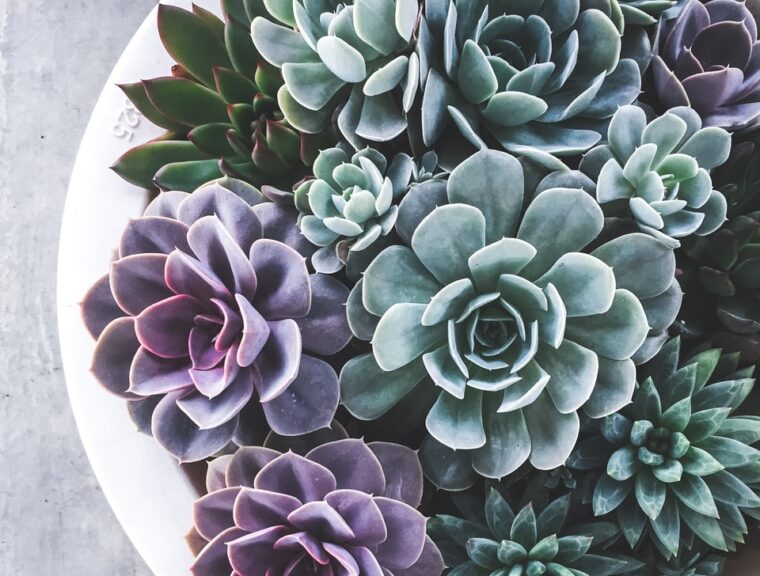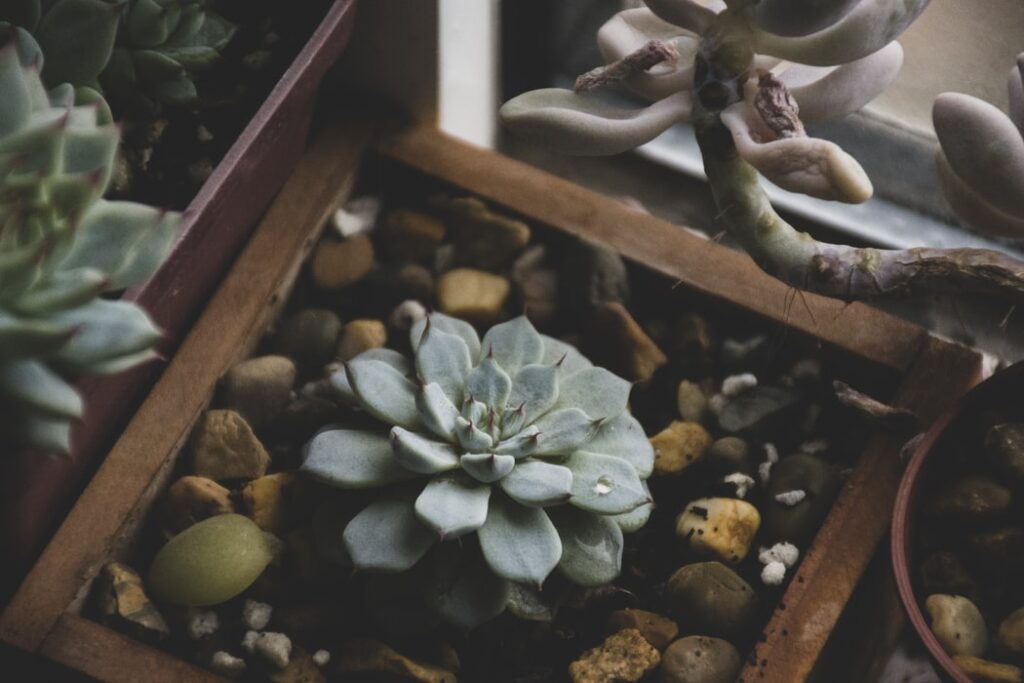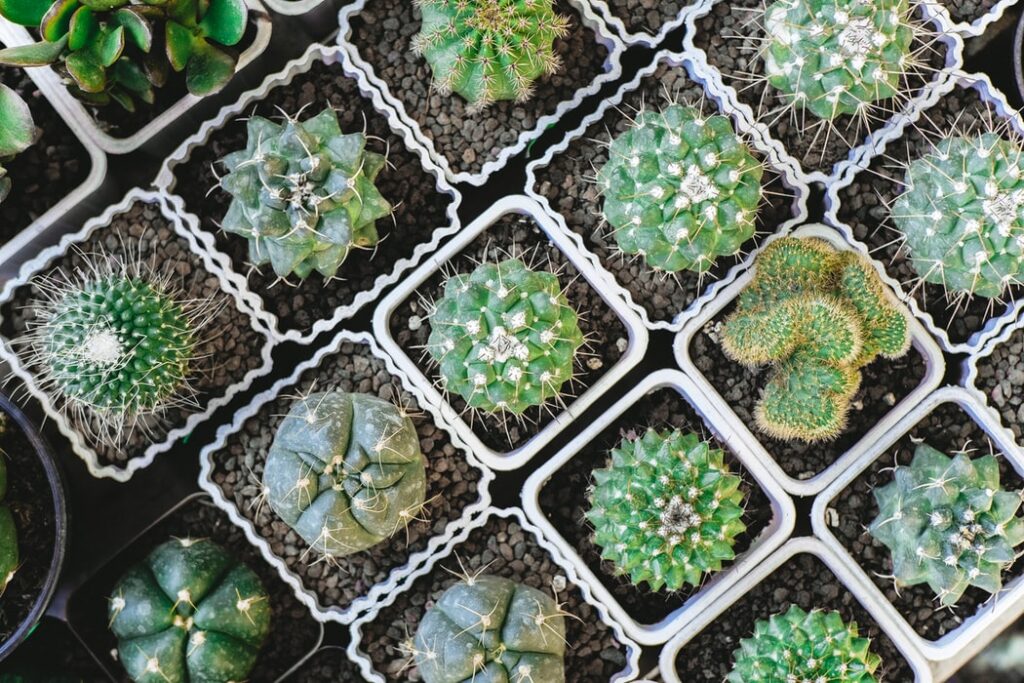Cacti and other succulents are seemingly perfect houseplants. They’re infamous for being “low-maintenance” as they don’t require too much water. However, this makes overwatering a regular occurrence in almost every newbie succulent owner.
Avoiding this is difficult if you’re not sure how an overwatered cactus even looks like! That’s why, in this article, we’ll talk about some telling signs you need to tone your watering schedule down and save your succulent from rotting!
So, without any further ado, let’s get right to the bottom of it.

The leaves seem mushy and puckered
The first sign of an overwatered succulent has to be the mushiness. Your cactus stores water inside of its cells. When it has absorbed too much water, these cells will get overwhelmed, which in turn causes mushy skin. Make sure to check your plant for these signs if you suspect your plant is getting too much water.
Of course, saving your plant when it’s dehydrated is easier than saving it once it starts rotting. So, if you still don’t have a watering schedule, we suggest you start low. If you notice the plant is drying out, simply intensify your watering routine for a bit. Look at how your plant reacts, and you’ll soon find the optimal watering routine that will keep your cacti thriving for years to come.
The plant is turning darker or there is some discoloration
The leaves turning black is the main sign your plant is starting to rot. It usually starts from the center, spreading all over the entire body later on. As soon as you notice the color changing to black, stop the watering. Keep your plant out in the sun and keep it warm. In this way, you’ll be able to dry it out, which will hopefully get it back to normal. Besides, remember to remove the rotten parts as soon as possible for the best possible result.
Of course, this change won’t happen overnight, so keep an eye on your plant’s leaves and their color. As soon as it starts to get darker, it’s time to lower your watering efforts.
Remember to ask your supplier about the best tips for watering your succulent. Different kinds require a different type of care, and the amount of water they need will depend on a variety of factors such as their size, type, and soil they’re planted in.

Your watering schedule stays the same during the winter
While you may think your cactus is dying from the cold temperatures, that should rarely be the case. As you already know, their natural habitat requires them to be cold-proof since the nights in the desert tend to get below freezing temperatures quite frequently.
The reason why your succulents are dying is tied to the temperature drop in a completely different way. Cold weather will keep their soil wet for longer, as there’s no sun to dry it quickly. So, instead of keeping your usual routine during the winter, you should water the plants much less during this period of the year. Also, try to keep your plants somewhere warm, so their soil doesn’t stay wet for as long.
Most plant experts recommend watering the succulents for as little as three to four times during the entire winter season. So, keep this in mind once the cold days start coming.
You use regular soil for your succulents
A reliable plant supplier will always provide you with soil options once you decide to get a succulent for your home. Regular soil you use for your other plants simply isn’t suitable. This is because it retains moisture for too long, which can be extremely harmful to your succulent plant.
So, if you don’t have adequate soil, no matter how much you water your plants, it will be too much. Once you go shopping at the Succulent Market, remember to inquire about the type of soil these plants require to survive.
Overall, if you’re not using the right type of soil, you’re going to overwater your cacti: there’s no way to avoid it. Succulents need time to absorb the water, so keeping in the soil for too long will result in damage sooner than later. Avoid this at all costs, and find the right soil for your plant even before you buy it.

The leaves are dropping
Dropped leaves are a sign of both an overwatered and underwatered succulent, so many owners make the mistake of adding more water as soon as they notice this particular sign. However, if you’ve been watering it before this happened, you’re likely dealing with an overwatered plant. You’ll also notice some other signs such as discoloration and rot, which will help you determine you’re overwatering these plants.
We suggest you keep a regular watering schedule while keeping a close eye on how your plant reacts to it. Your plant will tell you everything you need to know, so look carefully until you find the perfect schedule.
You’re watering your cacti while the soil is still wet
Always check the soil before watering your plant again. If it’s wet, wait a bit more. If it’s dry, feel free to water your cactus! Of course, this doesn’t mean you should water it as soon as you notice the soil is dry. It would likely be more water than your plant actually needs.
So, keep a strict schedule before anything else! Your plant doesn’t need to be watered every day, a few times a month should do the job! Remember not to forget about it, as underwatering is as dangerous as overwatering.

The bottom line
Overwatered succulent won’t survive for long. If it seems like you can’t keep your plants alive, you’re probably not paying attention to signs of overwatering. Check the internet for some visual examples of how these signs look. As there are many different types of succulents, these signs will manifest differently. So, remember to be specific while searching, and you’ll quickly learn everything you need to know about healthy watering habits that will keep your plant alive and well for as long as possible.
